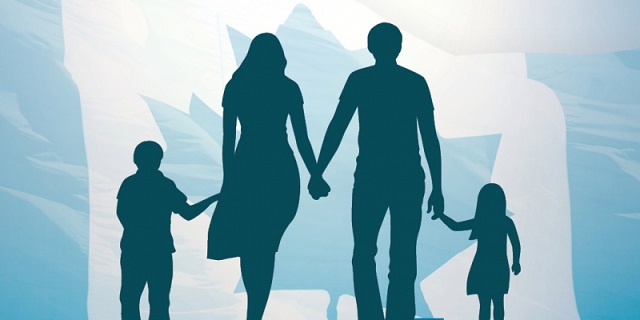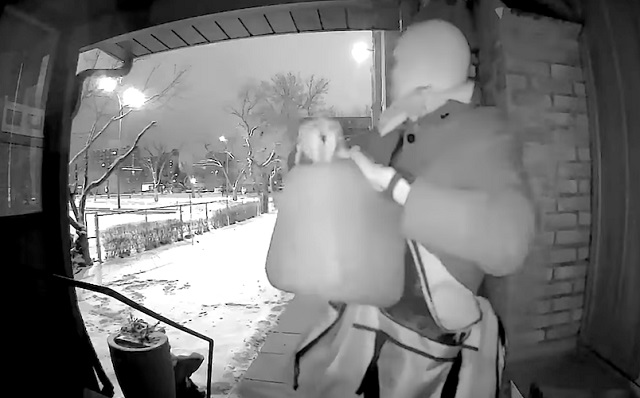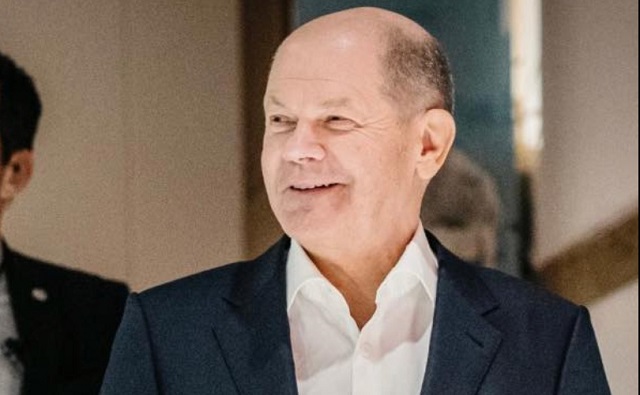Alberta
Alberta Budget 2021 Highlights

Maintaining responsible spending
Budget 2021’s responsible approach to spending will mean more investment in priority areas like health care, education and job creation.
Budget 2021 is built on 3 fiscal anchors:
- Keep net debt below 30% of GDP to help protect future generations from rising debt servicing costs.
- Deliver services more cost effectively by bringing spending in line with other comparator provinces.
- Re-establish a plan to balance the budget post-pandemic when a more stable level of predictability returns to the budgeting process.
Getting back on track
Operating expense
- In 2021–22, operating expense is $1 billion higher than 2020–21 forecast and begins to normalize, remaining relatively flat over the next 2 years.
Deficit
- $18.2 billion deficit is targeted for 2021–22, $2 billion less than the 2020–21 forecast.
- $11 billion and $8 billion deficits are targeted for 2022–23 and 2023–24 respectively.
Declining deficit can be attributed to decreasing expense as:
- the costs of the pandemic subside
- the government works to streamline and modernize service delivery
- revenue increases as the economy recovers
Budget 2021 funding highlights
Budget 2021 provides funding of:
- $23 billion for health services
- $8.2 billion operating expense for kindergarten to grade 12 (K to 12) education services
- $6.3 to $6.4 billion operating expense for social services ministries
- $136 million over 3 years for the Alberta Jobs Now program
- $166 million over 3 years for the Innovation Employment Grant
- $500 million in 2021–22 for additional investments in economic recovery
Investing in health care
Alberta’s government is increasing Health’s budget by over $900 million (or 4%) to $23 billion, and that’s excluding the impact of COVID-19.
- $5.4 billion for physician compensation and development (including academic medicine)
- $3.5 billion for community care, continuing care and home care programs, including $20 million over 4 years for palliative and end of life care
- $1.9 billion for drugs and supplemental health benefits.
- $34 million for children’s health supports to expand mental health and rehabilitation services for children and youth
- $140 million over 4 years for mental health and addiction services
Continuing the fight against COVID-19
Budget 2021 invests in continued supports to protect Albertans as we enter the second year of the pandemic.
- $1.25 billion COVID-19 Contingency to address health-care costs for responding to the pandemic, including surgical wait times and backlogs
- This is in addition to $2.1 billion spend in 2020-21
Getting health care back on track
Budget 2021 invests $16 billion for Alberta Health Services operations. Includes:
- Alberta Surgical Initiative
- Continuing Care Capacity Plan
- CT and MRI Access Initiative
Investing in health care capital
Budget 2021 commits $3.4 billion over 3 years for health related capital projects and programs, providing:
- $2.2 billion for health facilities, with $143 million for 5 new projects
- $766 million for Alberta Health Services self-financed capital, for parkades, equipment and other capital requirements
- $343 million for capital maintenance and renewal of existing facilities
- $90 million for health department IT projects
Preparing for recovery
Alberta’s Recovery Plan is a bold strategy to create jobs that get people back to work, build infrastructure and diversify our economy. This includes the acceleration of the Job Creation Tax Cut, which creates employment opportunities by making Alberta one of the most attractive jurisdictions in North America for new business investment. Budget 2021 will spend an additional $3.1 billion in 2021–22 to continue supporting recovery plan strategies.
Budget 2021 invests $1.7 billion more in capital funding in 2021–22 than what was planned in Budget 2020.
The 3-year Capital Plan now totals $20.7 billion and will support more than 50,000 direct and 40,000 indirect jobs through to 2024.
Diversifying the economy
In 2021–24, $1.5 billion invested in Alberta’s Recovery Plan.
Budget 2021 invests in established and emerging sectors that hold the greatest potential for growth and job creation, and are fundamental to our economic recovery including: energy; agriculture and forestry; tourism; finance and fintech; aviation, aerospace and logistics; and technology and innovation.
Economic recovery spending highlights
-
- Innovation Employment Grant supports small and medium-sized businesses that invest in research and development
- Developing framework to protect intellectual property in Alberta
- Investment and Growth Strategy supports emerging sectors while building on our existing strengths
- Invest Alberta provides supports and services to drive up investment and showcase Alberta as the best place in the world to do business
Alberta
Red Deer Doctor critical of Alberta’s COVID response to submit report to Danielle Smith this May

From LifeSiteNews
Leading the task force is Dr. Gary Davidson, who was skeptical of mandates at the time.
Alberta Premier Danielle Smith will soon be receiving a little-known report she commissioned which tasked an Alberta doctor who was critical of the previous administration’s handling of COVID to look into how accurate the province’s COVID data collection was, as well as the previous administration’s decision-making process and effectiveness.
As noted in a recent Globe and Mail report, records it obtained show that just less than one month after becoming Premier of Alberta in November of 2022, Smith tasked then-health minister Jason Copping to create the COVID data task force.
Documents show that the Alberta government under Smith gave the new task force, led by Dr. Gary Davidson – who used to work as an emergency doctor in Red Deer, Alberta – a sweeping mandate to look at whether the “right data” was obtained during COVID as well as to assess the “integrity, validity, reliability and quality of the data/information used to inform pandemic decisions” by members of Alberta Health Services (AHS).
As reported by LifeSiteNews in 2021, Davidson said during the height of COVID that the hospital capacity crisis in his province was “created,” was not a new phenomenon, and had nothing to do with COVID.
“We have a crisis, and we have a crisis because we have no staff, because our staff quit, because they’re burned out, they’re not burnt out from COVID,” Davidson said at the time.
Davidson also claimed that the previous United Conservative Party government under former Premier Jason Kenney had been manipulating COVID statistics.
In comments sent to the media, Smith said that in her view it was a good idea to have a “contrarian perspective” with Davidson looking at “everything that happened with some fresh eyes.”
“I needed somebody who was going to look at everything that happened with some fresh eyes and maybe with a little bit of a contrarian perspective because we’ve only ever been given one perspective,” she told reporters Tuesday.
“I left it to [Davidson] to assemble the panel with the guidance that I would like to have a broad range of perspectives.”
Smith took over from Kenney as leader of the UCP on October 11, 2022, after winning the leadership of the party. The UCP then won a general election in May 2023. Kenney was ousted due to low approval ratings and for reneging on promises not to lock Alberta down during COVID.
After assuming her role as premier, Smith promptly fired the province’s top doctor, Deena Hinshaw, and the entire AHS board of directors, all of whom oversaw the implementation of COVID mandates.
Under Kenney, thousands of nurses, doctors, and other healthcare and government workers lost their jobs for choosing to not get the jabs, leading Smith to say – only minutes after being sworn in – that over the past year the “unvaccinated” were the “most discriminated against” group of people in her lifetime.
As for AHS, it still is promoting the COVID shots, for babies as young as six months old, as recently reported by LifeSiteNews.
Task force made up of doctors both for and against COVID mandates
In addition to COVID skeptic Dr. Gary Davidson, the rather secretive COVID task force includes other health professionals who were critical of COVID mandates and health restrictions, including vaccine mandates.
The task force was given about $2 million to conduct its review, according to The Globe and Mail, and is completely separate from another task force headed by former Canadian MP Preston Manning, who led the Reform Party for years before it merged with another party to form the modern-day Conservative Party of Canada.
Manning’s task force, known as the Public Health Emergencies Governance Review Panel (PHEGRP), released its findings last year. It recommend that many pro-freedom policies be implemented, such as strengthening personal medical freedoms via legislation so that one does not lose their job for refusing a vaccine, as well as concluding that Albertans’ rights were indeed infringed upon.
The Smith government task force is run through the Health Quality Council of Alberta (HQCA) which is a provincial agency involved in healthcare research.
Last March, Davidson was given a project description and terms of reference and was told to have a final report delivered to Alberta’s Health Minister by December of 2023.
As of now, the task force’s final report won’t be available until May, as per Andrea Smith, press secretary to Health Minister Adriana LaGrange, who noted that the goal of the task force is to look at Alberta’s COVID response compared to other provinces.
According to the Globe and Mail report, another person working on the task force is anesthetist Blaine Achen, who was part of a group of doctors that legally challenged AHS’s now-rescinded mandatory COVID jab policy for workers.
Some doctors on the task force, whom the Globe and Mail noted held “more conventional views regarding the pandemic,” left it only after a few meetings.
In a seeming attempt to prevent another draconian crackdown on civil liberties, the UCP government under Smith has already taken concrete action.
The Smith government late last year passed a new law, Bill 6, or the Public Health Amendment Act, that holds politicians accountable in times of a health crisis by putting sole decision-making on them for health matters instead of unelected medical officers.
Alberta
Alberta’s baby name superstar steals the show again

Olivia and Noah continue to reign as top baby names in 2023.

Olivia and Noah are once again topping the lists in Alberta, highlighting the enduring appeal of the names. Olivia maintains a record setting streak as the most popular girls name in Alberta for the 11th year in a row, while Noah remains top pick for boys’ names for a fifth consecutive year.
“Congratulations to those who welcomed a new addition to their family in 2023. Bringing a child into the world is a truly momentous occasion. Whether the name you chose was in the top 10 or one of a kind, these names are only the beginning of the endless possibilities that lie ahead for each child. I look forward to supporting this generation by ensuring Alberta remains a place where they can thrive.”
In choosing names for their new arrivals, parents appear to have found inspiration in a variety of places. Some parents may have been inspired by plants like Ivy, Rose, Juniper, Poppy, Azalea or in nature like Wren, River, Meadow and Flora.
Others may have taken a literary approach with names like Bennett, Sawyer, Juliet and Atticus or been inspired by notable names from religious texts like Eve, Noah, Mohammed and Gabriel.
As always, popular culture may have had an influence through famous musicians (Aretha, Lennon, Presley, Hendrix), athletes (Beckham, Crosby, Evander), and even fairytale princesses (Tiana, Jasmine, Aurora, Ariel, Belle).
Quick facts
- A total of 47,263 births were registered in Alberta in 2023
- Notable changes to the early 2020s lists:
- Evelyn rose to seventh place on the girls’ names list after tying for 19th place in 2022.
- Emily returned to the top 10 list for girls after taking a short break in 2021 and 2022 after a 10-year stretch in the top 10 that started in 2010.
- Violet has cracked the top 10 list for the first time in at least four decades, tying with Ava and Emily in ninth place.
- The top 10 boys’ names remain the same as last year but with a slight change in order.
- Historically, girls’ names that held the No. 1 spot for the longest consecutive time period include:
- Olivia: 11 years (2013-2023)
- Jessica: six years (1990-1995)
- Emily: five years (1998-2002)
- Historically, boys’ names that held the No. 1 spot for the longest consecutive time period include:
- Ethan: nine years (2001-2009)
- Liam: seven years (2010-2016)
- Matthew: five years (1995-1999)
- Noah: five years (2019-2023)
- Parents have up to one year to register their child’s birth. As a result, the list of 2023 baby names and birth statistics may change slightly.
Boys’ names and frequency – top 10 names 2018-23
(In brackets is the number of babies with each name)
| Place | Boy Names (2023) | Boy Names
(2022) |
Boy Names (2021) | Boy Names (2020) | Boy Names (2019) | Boy Names (2018) |
| 1 | Noah (276) | Noah (229) | Noah (274) | Noah (239) | Noah (275) | Liam (225) |
| 2 | Liam (181) | Liam (176) | Jack (220) | Oliver (229) | Liam (234) | Oliver (212) |
| 3 | Oliver (178) | Theodore (173) | Oliver (208) | Liam (206) | Oliver (225) | Noah (199) |
| 4 | Theodore (173) | Oliver (172) | Liam (198) | Benjamin (182) | Ethan (213) | Ethan (188) |
| 5 | Jack (153) | Jack (159) | Theodore (191) | William (178) | Jack (198) | Logan (182)
Lucas (182) |
| 6 | Henry (146) | William (146) | William (174) | Jack (169) | William (185) | Jacob (181) |
| 7 | Lucas (140) | Benjamin (138) | Ethan (162) | Lucas (163) | Lucas (174) | William (178) |
Girls’ names and frequency – top 10 names 2018-2023
(In brackets is the number of babies with each name)
| Place | Girl Names (2023) | Girl Names
(2022) |
Girl Names (2021) | Girl Names (2020) | Girl Names (2019) | Girl Names (2018) |
| 1 | Olivia (210) | Olivia (192) | Olivia (210) | Olivia (236) | Olivia (229) | Olivia (235) |
| 2 | Amelia (145) | Sophia (152) | Charlotte (166) | Emma (184) | Charlotte (188) | Emma (230) |
| 3 | Sophia
(138) |
Emma (149) | Ava (165) | Charlotte (161) | Sophia (181) | Charlotte (175) |
| 4 | Charlotte
(135) |
Amelia (133) | Emma (164) | Ava (159) | Emma (178) | Emily (164) |
| 5 | Emma (133) | Harper (125) | Amelia (161) | Sophia (151) | Ava (161) | Ava (161) |
| 6 | Isla (120) | Charlotte (117) | Sophia (137) | Amelia (145) | Amelia (159) | Abigail (153) |
| 7 | Evelyn (114) | Ava (115) | Isla (135) | Isla (133) | Emily (150) | Harper (150) |
| 8 | Chloe (101)
Violet (101) |
Isla (101) | Abigail (120)
Chloe (120) |
Emily (127) | Abigail (141) | Sophia (146) |
| 9 | Ava (99) Emily (99) |
Lily (100) | Evelyn (119) | Lily (123) | Hannah (137) | Amelia (145) |
| 10 | Hannah (98)
Hazel (98) |
Chloe (92) | Aria (112) | Abigail (114) | Elizabeth (124) | Elizabeth (130) |
Related information
-

 COVID-1923 hours ago
COVID-1923 hours agoInquiry shows Canadian gov’t agencies have spent $10 million on social media ads for COVID jabs
-

 Business22 hours ago
Business22 hours agoFederal government’s ‘fudget budget’ relies on fanciful assumptions of productivity growth
-

 Energy2 days ago
Energy2 days agoReflections on Earth Day
-

 Housing2 days ago
Housing2 days agoTrudeau’s 2024 budget could drive out investment as housing bubble continues
-

 Alberta2 days ago
Alberta2 days agoAlberta government should create flat 8% personal and business income tax rate in Alberta
-

 National2 days ago
National2 days agoLow and middle income Canadians hit hardest by high marginal effective tax rates
-

 Energy1 day ago
Energy1 day agoA Wealth-Creating Way of Reducing Global CO2 Emissions
-

 conflict1 day ago
conflict1 day agoCol. Douglas Macgregor: US is ‘facing disaster’ as it funds overseas wars while bankrupt









